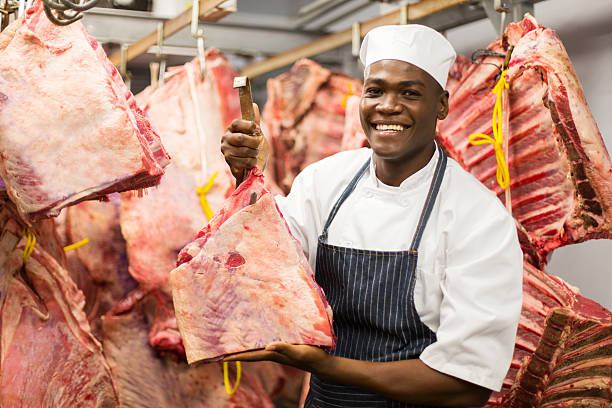Cash flow pressures weigh on Dar meat market

DAR ES SALAAM: MEAT prices at the Vingunguti wholesale market in Dar es Salaam have edged lower, reflecting the combined effects of weaker demand, cash flow pressures and seasonal consumption shifts.
Traders said the slowdown, though cyclical, underscores how food markets remain sensitive to liquidity trends and purchasing power in the wider economy.
Currently, beef on average is sold between 8,000/- and 8,500/- per kilo, compared to 9,000/- to 9,500/- two months ago. The first-grade sells between 9,000/- and 9,500/- per kilo, second-grade goes for 8,000/- to 8,500/- while third-grade leaner and ordinary, fetches 7,500/- to 8,000/-.
Vingunguti Butchers Chairman Kelvin Thomas told Daily News yesterday that prices have softened mainly due to weaker business activity and reduced liquidity in circulation.
“I am not an economist but I feel there is no money in circulation, the liquidity is low, thus subduing demand,” Mr Thomas said.
ALSO READ: NBC unveils desk for Lake Zone sectors
Bank of Tanzania latest monthly economic review shows that the extended broad money supply (M3) grew at an annual rate of 19.9 per cent in July compared to 18.7 per cent registered in the preceding month and in line with the current monetary policy stance.
“This growth was mainly driven by the sustained expansion of credit to the private sector,” BoT report showed.
The Chairman though said the business was not bad compared during the rainy season which bring a number of challenges to slump the market.
“The rainy season is the most challenging period for the meat business as major customers, including restaurants, hotels, schools and events and ceremonies, reduce purchases due to limited demand,” Mr Thomas said.
He said when it rains cats and dogs, both demand and supply fall.
“Heavy rains reduce demand for beef in businesses such as hotels, directly affecting our operations. Supply also slows as cattle keepers hold back their stock,” Mr Thomas said.
Currently the Vingunguti arborator slaughtered between 500 and 600 cows a day and the number increase at the end of the week.
Joel Meshack, a meat trader at Vingunguti, said July to September is typically a low season, with the number of slaughtered animals per day remaining almost steady since the start of the third quarter.
“The market usually gains momentum from next month through the end of the year. At peak season and during religious celebrations, around 1,000 cattle are slaughtered daily,” Meshack said.
One of the Vingunguti meat wholesaler John Zacharia said the absence of festive seasons has further kept prices subdued.
“The slight decrease in meat price is the absence of religion festive seasons has kept prices moderate.
“Adding to the challenge, closures of higher learning institutions between July and October reduce bulk demand from hotels, restaurants and food vendors,” Mr Zacharia said.
The cyclical volatility underscores the need for better market integration and cold chain investments, which would help stabilise supply and reduce wastage during low-demand periods.
Despite slightly price decrease still, wholesale buyers, purchasers 20 kilogrammes and above, demand discount unlike retailers enjoy the low price and pay full price.
“All in all, the market remains relatively stable, with steady but lower demand compared to festive periods,” Mr Zacharia said.
Goat and sheep prices, however, have remained constant, selling ranges between 80,000/- and 200,000/- depending on size and type.
Economists note that lower beef prices offer temporary relief to households, but the trend reflects broader structural issues in food demand linked to income cycles, seasonal closures of schools and consumer sensitivity to liquidity.





